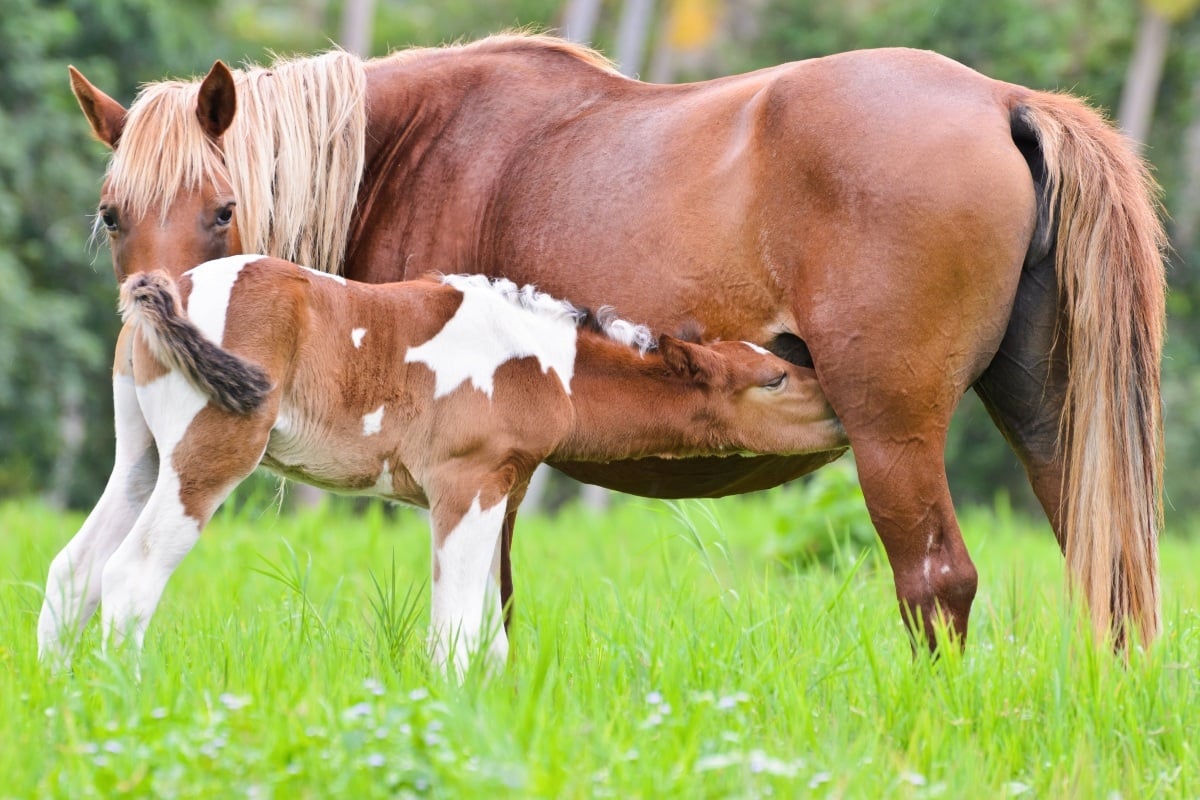When Is A Mare Too Old To Breed?

Many horse owners have come to their equine veterinarian or favored expert with the same question: They have a wonderful mare that they're thinking about breeding, but they're afraid she might be too old. Perhaps she's always been healthy, but they don’t know if she’s ever had a foal before.
Generally, assuming a filly is healthy and on a good plan of nutrition, she can be bred as early as two years of age, although many breeders suggest waiting until three years of age.1 Mares can continue to produce foals well into their late teens or early to mid 20’s. However, mare owners should realize that the prognosis for fertility of an older mare decreases each year. An aged mare that has recently had a foal has a greater chance of becoming pregnant again than a mare of similar age that has remained barren despite being bred over multiple estrous cycles during the previous breeding season. The fact that an older mare has never been mated previously (i.e. a maiden mare) does not necessarily mean that she will be fertile. Older maiden mares are notoriously difficult to get in foal.2
First things First - Even With the Older Mare
The best thing to do to properly evaluate the mare’s reproductive health and capacity is to have the veterinarian perform a BSE (breeding soundness exam) on the mare. Rectal palpation with ultrasound will help the veterinarian evaluate the health of the mare’s uterus and monitor her ovarian activity. Some mares begin to experience a decrease in the number of estrus (heat) cycles, or have more irregular cycles, as they age and palpation will detect the presence of follicles, cysts, and other ovarian structures, both normal and abnormal.
A uterine culture and biopsy may also be a good idea if there is limited knowledge of the mare’s past reproductive history. A uterine culture will indicate the presence of a subclinical uterine infection that would decrease the mare’s fertility and a uterine biopsy would show the microscopic details of the endometrium, or lining of the uterus, and may detect abnormalities that could not be felt on palpation.3
In evaluating a mare for breeding, it is important to know her general medical and management history plus a detailed reproductive history. A general history should include:
-
- age
- purchase date
- performance history
- serologic tests
- vaccination history
- boarding facilities
- feed
- previous use
- intended use
- medical history
- surgical history
- disease problems
- weight loss or gain
The mare's reproductive history (if available) should include:
- age at first heat
- heat dates
- interval between heats
- length of heats
- age first bred
- breeding dates
- foaling dates
- date of last foaling
- abnormal or assisted foalings
- number of pregnancies
- abnormal pregnancy
- previous year’s breeding cycle pattern
- number of breedings for conception
- evidence of vaginal discharge
- mothering ability
- milk production
- teasing method
- breeding method (pasture, hand breeding or artificial insemination)4
The Older Mare: Breeding Particulars
Peak fertility in horses occurs at approximately 6 to 7 years of age. Fertility begins to decline at around 15 years of age as mares become more difficult to get in foal and the rate of pregnancy loss increases. A young, reproductively healthy mare has a 50 to 60% chance of becoming pregnant during a given estrous cycle when mated to a fertile stallion. In contrast, an older mare may have a 30 to 40% chance or less of becoming pregnant during any given estrous cycle.3 Aged mares may need to be bred over more estrous cycles, on average, to establish a pregnancy than younger mares.
It is recommended that a veterinarian perform a reproductive evaluation on an older mare prior to the breeding season. If an aged mare does not have a history of infertility, the examination may consist simply of an ultrasound examination and a uterine culture. However, if the mare has been barren for several years the evaluation should include an assessment of the perineal anatomy (i.e. the angle and muscular tone of the vulva), vaginal speculum examination, digital examination of the cervix, cytology and culture of the uterus, endometrial biopsy and an ultrasonographic evaluation of the reproductive tract.
Older mares may develop one or more clinical problems that can adversely affect fertility. These may include poor perineal anatomy, increased predisposition to uterine infections and persistent post-mating inflammation, increased uterine scar tissue deposition and endometrial cyst formation, higher incidence of ovulation failure and other factors.3
1Harman, A., DVM. Appropriate Breeding Age. Equisearch, Aug. 2011.
2McCue, P., DVM. Breeding the Older Mare. Colorado State University American College of Theriogenologists, Equine Reproduction Laboratory, 2007.
3O'Brien, A., DVM. How Old is Too Old to Breed a Mare? Horse Illustrated, 26 Feb. 2019.
4Troedsson, M.H.T., Breeding Soundness Examination of the Mare. USDA National Institute of Food and Agriculture Extension, Jan. 2020, 1-3.


